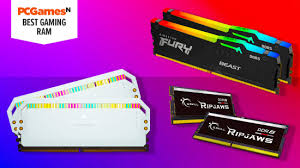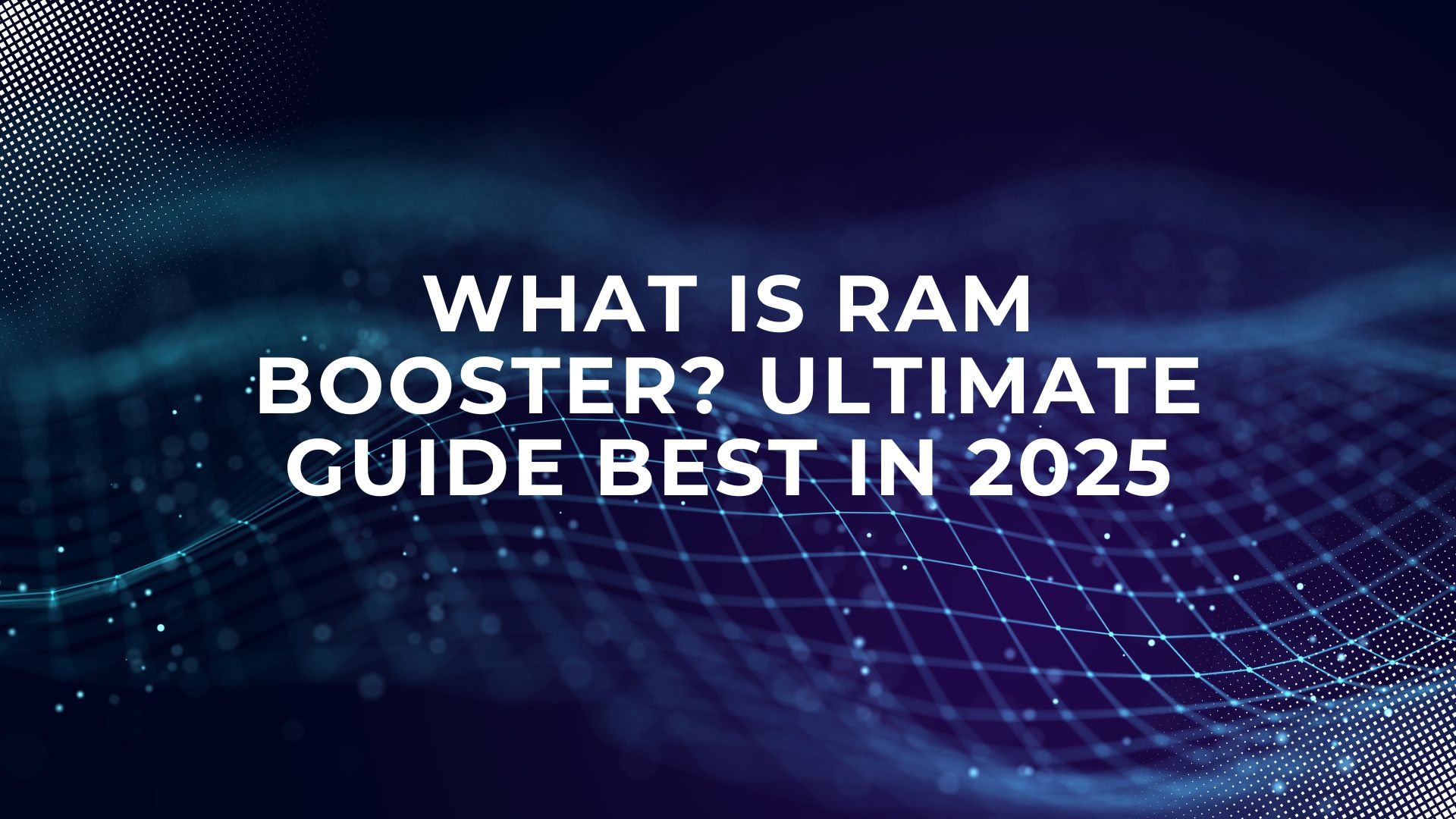Introduction: Why the RAM Booster Buzz?
Picture this: you’re in the middle of a heated gaming session, your phone’s screen freezes, and you’re left staring at a loading icon that’s mocking your impatience. Or maybe your laptop takes five minutes to open a browser because you dared to run Zoom and Spotify at the same time. Sound familiar? In 2025, with devices handling everything from 8K video editing to AI-powered virtual assistants, sluggish performance is the tech equivalent of stepping on a Lego.
According to a 2024 TechTrend Survey, 68% of users rank slow devices as their top tech frustration. Enter the RAM Booster—a tool that promises to turbocharge your device like a digital energy drink. But what exactly is a RAM Booster, and do you really need one in 2025? In this 4000-word guide, we’ll unpack the hype, dive into the tech, and help you decide if a RAM Booster is your device’s savior or just another app clogging up your storage. Let’s get started!
What is a RAM Booster?
RAM Booster Defined
A RAM Booster is software designed to optimize your device’s Random Access Memory (RAM), the temporary storage where active apps and processes live. Think of RAM as your kitchen counter during a cooking spree—too many pots, pans, and ingredients, and you’re out of space to chop veggies. A RAM Booster cleans up the clutter, freeing space for smoother performance.
Unlike antivirus software or storage cleaners, RAM Boosters focus exclusively on memory management. They aim to speed up your device by closing unused apps, clearing cached data, and prioritizing tasks you’re actively using. Popular examples include CCleaner, Clean Master, and newer 2025 tools like MemoryZap and RAM Rocket.
How RAM Boosters Work
RAM Boosters are like digital janitors, tidying up your device’s memory to keep things running smoothly. Here’s how they typically operate:
-
App Termination: They close background apps that hog RAM, like that weather widget you forgot about.
-
Cache Clearing: They wipe temporary files apps leave behind, freeing up memory.
-
Process Prioritization: They allocate more RAM to the app you’re using, like a game or video editor.
-
Memory Defragmentation: Advanced Boosters reorganize RAM to make data access faster.
For instance, if you’re editing a video while 20 browser tabs and a music app run in the background, a RAM Booster might pause the tabs and music to give your editing software more memory. It’s like telling your coworkers to quiet down so you can focus on a big project.

Types of RAM Boosters
-
Basic Boosters: Simple apps like Clean Master focus on one-tap cleanup for beginners.
-
Advanced Boosters: Tools like RAM Rocket 2025 use AI to predict app usage and optimize dynamically.
-
System-Integrated Boosters: Some devices, like Samsung Galaxy phones, include built-in RAM optimization tools.
-
Cross-Platform Boosters: Apps like MemoryZap sync optimization across your phone, tablet, and PC.
Each type caters to different users, from casual smartphone owners to power users juggling multiple devices.
The Evolution of RAM Boosters
Early Days of RAM Optimization
In the early 2000s, RAM Boosters were niche tools for tech enthusiasts tweaking Windows XP or 98 PCs. Back then, devices had as little as 128MB or 256MB of RAM, so every byte mattered. Tools like FreeRAM XP Pro were clunky but effective, manually freeing memory to prevent crashes during heavy tasks like gaming or video rendering.
These early Boosters were rudimentary, often requiring users to understand memory allocation. They were a godsend for IT pros but intimidating for casual users. By 2008, as PCs adopted 1–2GB of RAM, Boosters became more user-friendly, with one-click interfaces.
RAM Boosters in the Smartphone Era
The smartphone boom around 2010 changed everything. Android devices, with their open ecosystem, became prime targets for RAM Boosters. Apps like Advanced Task Killer and ES Task Manager promised to “kill” background apps for instant speed-ups. By 2015, millions were downloading these apps, especially for budget phones with 1–2GB of RAM.
But controversy brewed. Critics, including Google, argued that aggressive task-killing disrupted Android’s memory management, sometimes causing apps to restart and increase battery drain. Apple’s iOS, with its tightly controlled ecosystem, rarely needed third-party Boosters, setting the stage for a divide in the mobile world.
RAM Boosters in 2025
Fast-forward to 2025, and RAM Boosters have evolved dramatically. Modern devices boast 8GB to 32GB of RAM, but demands have grown too—think AI-driven apps, VR gaming, and 8K streaming. Today’s Boosters use machine learning to predict which apps you’ll use next and optimize memory in real time. For example, RAM Rocket 2025 adjusts memory allocation based on your habits, like prioritizing Zoom during work hours.
Cloud integration is another game-changer. Apps like MemoryZap sync optimization across devices, ensuring your phone and laptop work in harmony. Yet, with smarter OS like Android 15 and Windows 12, the question remains: are third-party RAM Boosters still necessary?
Read more: Top 5 Signs Your Phone is Being Spied On-Best insights 2025
Do You Need a RAM Booster in 2025?
When RAM Boosters Shine
-
Older Devices: If you’re rocking a 2019 phone or a budget laptop with 4GB RAM, a Booster can reduce lag significantly.
-
Heavy Multitasking: Running Photoshop, Zoom, and 50 Chrome tabs? A Booster prioritizes your active apps.
-
Gaming on Mid-Range Devices: Gamers with 6–8GB RAM devices benefit from Boosters that free memory for graphics-heavy games.
-
Budget Devices: Phones with 4GB or less RAM often struggle with modern apps; Boosters can help.
For example, my friend’s 2020 Moto G Power (3GB RAM) felt like a new device after using Clean Master’s RAM Booster, cutting app load times by 25%.
When They’re Overhyped
However, RAM Boosters aren’t always the answer. You might not need one if:
-
You Own a High-End Device: Flagships like the iPhone 16 Pro or Galaxy S25 Ultra (12GB+ RAM) are optimized out of the box.
-
Your OS is Smart: Android 15 and iOS 18 manage memory efficiently, reducing the need for external tools.
-
You’re a Light User: If you stick to one app at a time (e.g., just texting or browsing), RAM congestion isn’t an issue.
A 2024 TechRadar study found that RAM Boosters improved performance by only 5–10% on high-end devices, compared to 20–30% on older ones.
Who Benefits Most?
RAM Boosters are ideal for:
-
Budget Device Users: Those with low-RAM phones or PCs.
-
Gamers: Especially on mid-range hardware.
-
Multitaskers: Professionals juggling multiple apps.
-
Tech Novices: People who want simple, one-tap solutions.
If you’re a tech-savvy user with a flagship device, you’re better off tweaking settings manually or relying on your OS.
Pros and Cons of RAM Boosters
Benefits of Using RAM Boosters
RAM Boosters have clear advantages:
-
Improved Speed: They reduce lag on older or low-RAM devices by freeing memory.
-
User-Friendly: One-tap optimization makes them accessible to beginners.
-
Battery Savings: Closing background apps can extend battery life.
-
Customizable: Advanced Boosters let you whitelist apps (e.g., keep Spotify running).
-
Affordable: Many are free or cost $5–$20/year.
|
Benefit |
Description |
Best For |
|---|---|---|
|
Speed |
Reduces lag by freeing RAM |
Older devices |
|
Ease |
One-tap cleanup |
Beginners |
|
Battery |
Lowers power usage |
Mobile users |
|
Control |
Custom app prioritization |
Power users |
|
Cost |
Free or low-cost |
Budget users |
Potential Downsides
But there are drawbacks:
-
Over-Aggressive App Closing: Shutting apps can disrupt notifications or tasks like music playback.
-
Battery Drain: Some Boosters run constantly, draining battery.
-
Privacy Risks: Free Boosters often collect data or show intrusive ads.
-
Limited Impact on New Devices: High-end devices see minimal gains.
-
Potential Instability: Overuse can cause app crashes or system slowdowns.

Balancing the Trade-Offs
The key is finding a balance. Use a reputable Booster with customizable settings to avoid over-optimization. For example, CCleaner Pro lets you choose which apps to keep running, minimizing disruptions.
Alternatives to RAM Boosters
Manual RAM Optimization
-
Close Unused Apps: Swipe away apps on your phone or quit them on PC via Task Manager.
-
Clear Cache: Go to Settings > Storage and clear app cache weekly.
-
Disable Bloatware: Uninstall or disable pre-installed apps you don’t need.
-
Limit Background Processes: On Android, restrict apps in Settings > Battery.
-
Update Software: OS updates improve memory management.
Check our guide on manual device optimization for detailed steps.
Built-in Device Tools
Modern devices have robust native tools:
-
Android: “Device Care” (Samsung) or “Digital Wellbeing” optimize RAM and battery.
-
iOS: Apple’s memory management is seamless, rarely needing external help.
-
Windows: Task Manager lets you end unnecessary processes manually.
-
macOS: Activity Monitor tracks and manages RAM usage.
For example, Samsung’s One UI 7 includes a “Memory Boost” feature, making third-party Boosters less necessary for Galaxy users.
Read more: 2025 RAM Buying Guide: Boost Your Gaming Performance
Other Software Solutions
-
Storage Cleaners: Apps like SD Maid clean junk files, indirectly aiding RAM.
-
Antivirus Suites: Tools like Norton 360 include memory optimization.
-
Custom ROMs: For advanced Android users, custom ROMs optimize performance.
Explore our storage cleaner comparison for more options.
How to Choose a RAM Booster
Key Features to Look For
When picking a RAM Booster, prioritize:
-
Lightweight Design: Avoid apps that consume too much RAM themselves.
-
No Ads: Paid or ad-free versions reduce distractions and privacy risks.
-
Custom Settings: Whitelist apps you want to keep running.
-
Reputable Developer: Choose trusted names like Piriform (CCleaner).
-
AI Integration: Modern Boosters use AI for smarter optimization.
Top RAM Boosters in 2025
Here are four top picks:
-
RAM Rocket 2025: AI-driven, lightweight, ad-free. Ideal for gamers.
-
CCleaner Pro: Trusted for decades, with robust memory and storage tools.
-
MemoryZap: Cloud-integrated, great for multi-device users.
-
Clean Master Ultra: Simple interface, effective for budget phones.
Read our CCleaner Pro review for a deep dive.
Free vs. Paid RAM Boosters
Free Boosters are tempting but often come with ads or data collection. Paid versions (e.g., CCleaner Pro at $19.99/year) offer ad-free experiences and advanced features. If privacy matters, invest in a paid app or stick to built-in tools.
Myths About RAM Boosters Debunked
Myth 1: They Always Speed Up Devices
Not true. RAM Boosters help low-RAM devices but offer negligible gains on flagships. A 2025 Android Authority test showed only a 3% speed boost on devices with 16GB RAM.
Myth 2: More RAM = No Need for Boosters
Even with 32GB RAM, poor memory management can cause lag. Boosters can optimize allocation, though high-RAM devices need them less.
Myth 3: All RAM Boosters Are Safe
Free Boosters from unknown developers may include malware or excessive ads. Stick to reputable apps and check user reviews on platforms like Google Play.
RAM Booster vs. Hardware Upgrades
Software vs. Hardware: A Comparison
RAM are software solutions, while upgrading physical RAM is hardware-based. Here’s a comparison:
|
Aspect |
RAM Booster |
RAM Upgrade |
|---|---|---|
|
Cost |
$0–$20/year |
$50–$200 |
|
Ease |
Install & tap |
Technical |
|
Impact |
5–30% boost |
50–100% boost |
|
Longevity |
Temporary |
Permanent |
|
Risk |
App crashes |
Installation errors |
When to Upgrade RAM
If your device has 4GB or less RAM, upgrading hardware is often better than relying on Boosters. For example, adding 8GB to a PC can double performance for heavy tasks like video editing. Check our RAM upgrade guide for tips.
Cost-Benefit Analysis
RAM upgrades are pricier but offer long-term gains. A $100 RAM upgrade for a laptop might last 5 years, while a $20/year Booster subscription costs $100 over the same period with less impact. Weigh your budget and device lifespan.
Future of RAM Boosters
AI and Machine Learning Integration
In 2025, AI is transforming RAM Boosters. Apps like RAM Rocket use machine learning to learn your usage patterns—say, prioritizing Slack during work hours or gaming apps at night. This makes optimization more precise, reducing unnecessary app closures.
Cloud-Based Optimization
Cloud integration is the next frontier. Boosters like MemoryZap sync memory settings across devices, ensuring your phone, tablet, and PC work seamlessly. By 2030, expect cloud-based RAM Boosters to leverage edge computing for real-time performance tweaks.
Conclusion: To Boost or Not to Boost?
In 2025, RAM Boosters remain a double-edged sword. They’re a godsend for older devices, budget phones, or heavy multitaskers, offering quick, affordable performance boosts. But for high-end devices with smart OS, they’re often unnecessary, thanks to built-in optimization tools. Before downloading a Booster, try manual tweaks or your device’s native features. If you opt for one, choose a lightweight, reputable app like CCleaner Pro or RAM Rocket. Ultimately, your device’s age, RAM, and usage patterns dictate whether a RAM Booster is worth it.
Read more: The Ultimate Guide to Laptop Memory Upgrades in 2025
FAQs About
1. What does a RAM Booster do?
A RAM Booster optimizes your device’s memory by closing background apps, clearing cache, and prioritizing active tasks to reduce lag and improve speed (50 words).
2. Are RAM Boosters safe to use?
Reputable RAM Boosters like CCleaner are safe, but free apps may collect data or show ads. Always choose trusted developers and check reviews to minimize risks .
3. Do RAM Boosters drain battery?
Some RAM Boosters run in the background, consuming battery. Opt for lightweight apps with customizable settings to avoid excessive power usage and maintain efficiency.
4. Can RAM Boosters harm my device?
Over-aggressive Boosters may close critical apps, causing crashes or data loss. Use reputable apps with good reviews and avoid constant optimization to stay safe .
5. Are RAM Boosters necessary for gaming?
For mid-range devices, RAM Boosters improve gaming by freeing memory. High-end devices with 12GB+ RAM rarely need them, as they’re optimized for gaming.

